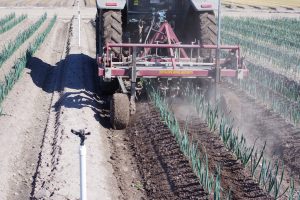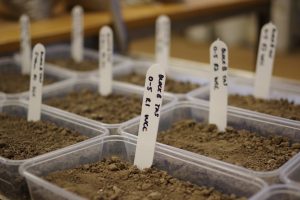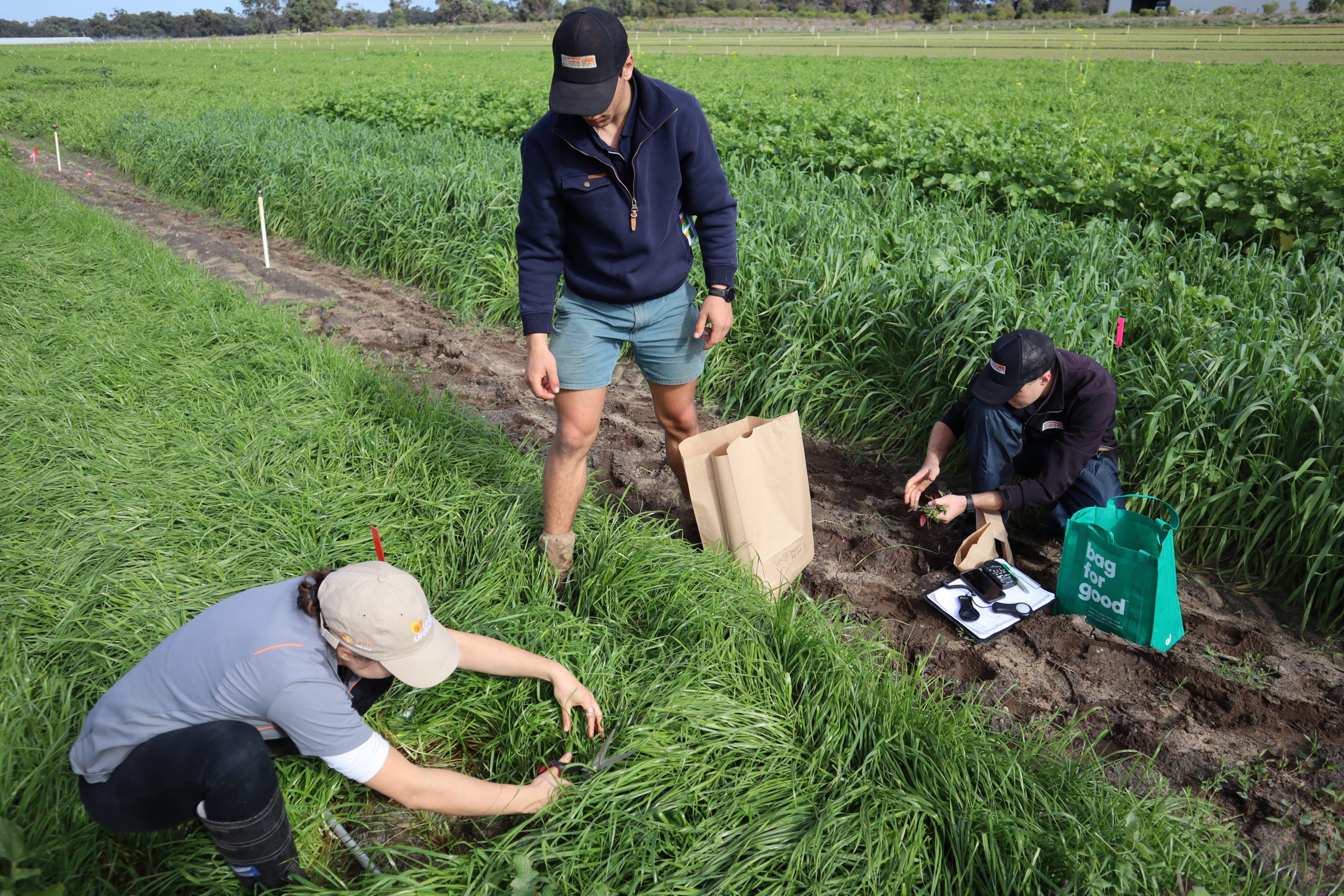A strategic approach to weed management for the Australian vegetable industry
This article is featured in Vegenotes 84 (Autumn 2022).
Facilitators
Project VG15070 was led by Associate Professor Paul Kristiansen from the University of New England.
Major findings
Project VG15070 ran from 2016 to 2021 with the goal of identifying and improving integrated management strategies for high-priority weeds. It followed an earlier scoping study (Project VG13079: Weed Management for the Vegetable Industry – Scoping Study), which identified the current strategies being used, the most common weeds and the most pressing research needs.
“The project involved a series of research activities to determine how certain non-herbicide weed management techniques may contribute to improved weed management in vegetable crops,” lead researcher Dr Paul Kristiansen said.
“This work coincided with the collection of economic data on the impact of weeds on different vegetable farms, as well as the development of a range of extension materials to highlight proven methods of control, including for several of the industry’s most important weeds.”
Researchers measured the weed seed bank in different vegetable crops and production regions by collecting soil samples across Australia. They also completed trials of winter and summer cover crop varieties in four regions nationally to determine which varieties were better at suppressing weed growth and in making weeds less of a problem in subsequent vegetable crops.
Other activities included evaluating the competitiveness of cover crop varieties with important weeds in a glasshouse trial; completing a field trial of different hand weeding implements to determine their effectiveness and user-friendliness in weed management; reviewing current literature for a variety of other supplementary weed control methods; and interviewing growers to collect data on the costs of weed management and their impact on crop profitability.

A key finding of the research team was that no single integrated weed management strategy suited all vegetable farms. This was due to the nature of different crops, diverse weed species present, the time and resources available to the grower, and seasonal variation. Rather, it was the level of diligence of the grower in following their chosen strategy that predicted success.
“There was little in the study of the weed seed bank to tie particular weed management practises, or crop type, to the quantity of viable seed found in the soil on different vegetable farms,” Dr Kristiansen said.
“We did, however, identify some highly effective strategies being used on different farms. These included a mix of common techniques, such as herbicide, and reintroduction of some ‘old’ pre-herbicide methods, such as tillage between crop rows and diligent hand-weeding on smaller-scale farms.
“Our main observations were that weed management will be most effective where the vegetable grower makes a detailed plan, uses several weed control methods together and implements these diligently, but is willing to innovate when things aren’t quite working. The objective is to minimise the number of weeds that flower and produce seed. If growers can achieve this, the burden of weeds will become less over time.”
The collection of economic data showed that introduction of new approaches to weed management – such as increasing hand weeding labour or purchasing inter-row tillage equipment – is likely to cost the vegetable grower more in the short- to medium-term. However, the benefits of this investment become obvious in the longer-term – providing the grower is happy to persist with the new approach and is confident of its success.
“We suggest that vegetable growers research any options they are considering before putting them in place,” Dr Kristiansen said.
Finally, the economic impact of weeds was at its most severe on organic farms, where herbicides are not an option.
“Therefore, for conventional vegetable growers, we don’t recommend going away from herbicides – just including other techniques strategically that can supplement herbicide usage to deliver better results and hopefully a higher yielding crop,” Dr Kristiansen concluded.

Background
In recent decades, weed management on Australian vegetable farms has largely relied on tillage, non-selective herbicides such as glyphosate, and in some cases chemical fumigation in between vegetable crop plantings.
These approaches are not necessarily sustainable in the long-term. Chemical fumigation has negative impacts on soil biology, and potential animal and human health impacts. Herbicide resistance is becoming more common in cropping, and frequent tillage has negative impacts on soil health and productivity. Hand weeding is expensive due to the high cost of labour.
Until Project VG15070, there had been relatively little research into improved management in vegetable crops in recent decades – despite work being carried out in other systems such as broadacre grains and cotton production in Australia. This is likely because traditional approaches were still working relatively well, despite sustainability problems being identified. However, there was scope to make gains in sustainable weed management in vegetable production by integrating other techniques, with the goal of reducing the amount of viable weed seed in the soil over time.
Acknowledgements
This project was funded by Hort Innovation using the vegetable research and development levy and contributions from the Australian Government. Support from vegetable farmers all over Australia and the VegNET regional extension officer team was critical to the success of this project.
Further information
Please contact Associate Professor Paul Kristiansen by emailing pkristi2@une.edu.au.
The final report for this project is available on InfoVeg. Click here to read more.
Cover image: Measuring cover crop ground cover percentage, counting weeds and collecting cover crop and weed biomass in Myalup, Western Australia (2019).
All images courtesy of Michael Coleman, University of New England.

